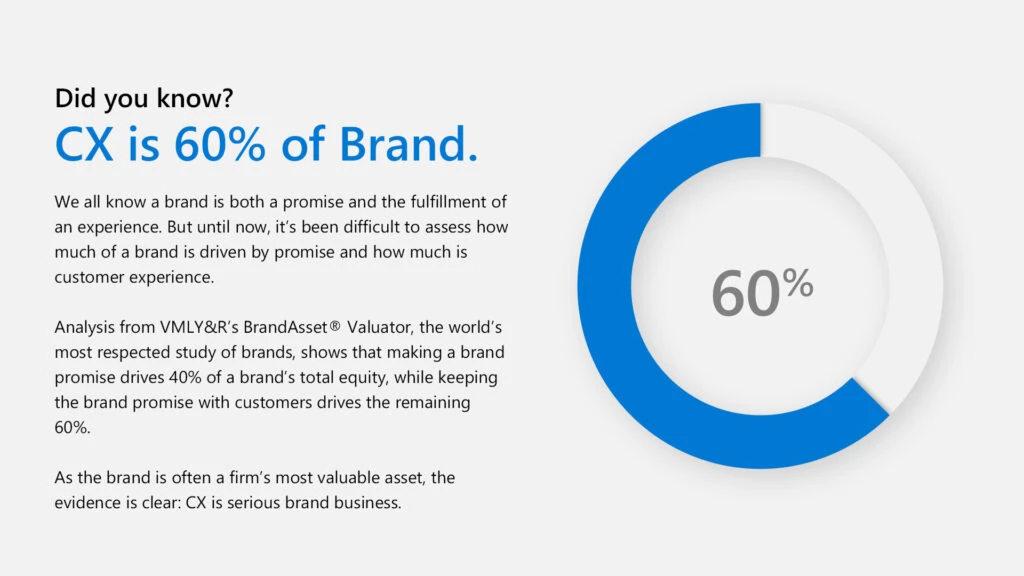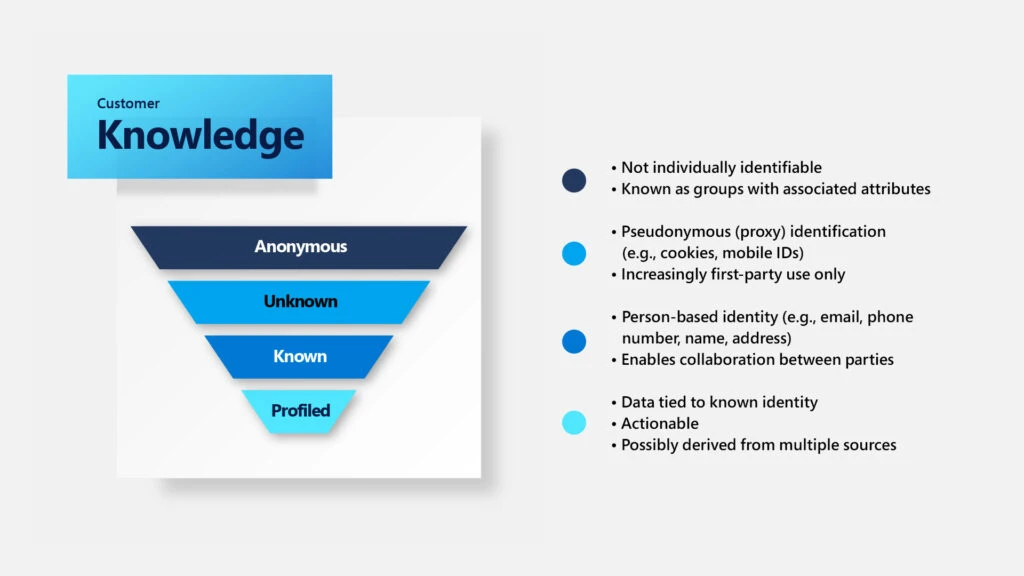
The CX Dilemma: 4 pivotal questions every CX leader must ask
We understand that for customer experience (CX) leaders everywhere, this feels like a precarious time. As we stare down a recession and navigate the lasting effects of COVID-19 on supply chains and the way we work, digital acceleration continues throughout every business.
Disruptions to customer engagement are adding similar instability. Customer interactions across digital channels are dramatically increasing at the very same time that CX leaders’ ability to track and understand those interactions is rapidly decreasing.
Pressure is rising across the entire C-Suite to produce immediate results, while also planning for technology transformation that ensures future growth. This is creating the CX Dilemma, as companies are forced to navigate trade-offs between optimizing individual channels and investing in cohesive end-to-end customer experiences. These cohesive experiences require protecting privacy while accessing customer data to connect touchpoints and orchestrate experiences spanning marketing, sales, and service.
The problem: The digital ecosystem has become less reliable
Although the term “omnichannel” marketing has been trending for more than a decade, customer experience remains largely siloed. Third-party platform partners have offered powerful reach and valuable services spanning adtech, search, social media, and e-commerce. Individually, each have enabled CX leaders to manage campaigns, engage customers, and track results, especially for companies that lack sophisticated in-house data and the analytical know-how. But partnerships that once offered exciting opportunities are evolving into potential vulnerabilities:
“The services that these platforms provide have been particularly advantageous for less technically advanced companies that may lack the in-house data (an organization’s first-party data and/or operational data) and analytical know-how to conduct independent analyses. On the other hand, they curb the relative advantage of more sophisticated companies who may be limited in the tools and analytical techniques they can use on these platforms. This can disincentivize innovation and concentrate overall ecosystem innovation within the data platforms themselves.”1
Meanwhile, customer demand for greater privacy, transparency, and control of their data, along with the pressure of regulatory interest, is disrupting companies’ access to granular customer data to generate relevant insights.
Browser cookies, which once offered the ability to track users and “sidle right up to the creepy line”2 are being deprecated, forcing a pivot to a cookieless future even as people live more of their lives online.
Simply put, an over reliance on third-party relationships is putting CX leaders at risk of losing access to the customer data that their very survival depends on.
Organizations struggle to overcome learned helplessness
Customers expect brands to deliver digital experiences that are personalized, relevant, and consistent across touch points,3 and we can no longer afford to outsource customer relationships to third parties.
The lack of interoperability between platforms, datasets, and views of the customer makes it very challenging for companies to reclaim ownership of their customer relationships and responsibility for orchestrating consistent experiences across journeys. These platforms are effectively walled gardens, disintermediating direct customer relationships, yet have grown so powerful due to network effects that organizations become locked in. This combination of powerful but limiting capabilities encourages a dependence that leads to a sense of helplessness in creating more personalized customer experiences.
“The current marketing ecosystem is characterized by the concentration of significant first-party user data in a handful of third-party platforms. The data shared…are carefully limited, in part to preserve data privacy. A consequence of this, however, has been that innovation has been constrained to the capacity and capabilities of these platforms.“1
Tasked with delivering short-term key performance indicators (KPIs), teams are incentivized to focus on what they control: leveraging investments with current vendors, maximizing performance of individual channels, and unknowingly perpetuating a cycle that all but ensures a fragmented ecosystem.
Taking ownership of customer relationships and overcoming this CX Dilemma is essential for long-term growth.
The solution
CX leaders cannot risk falling short of current goals, nor can they continue to depend on an ecosystem of unreliable third parties and walled gardens. While it won’t be easy, you must build the business case, right fit the talent, and execute a strategy to establish data autonomy.
Data autonomy gives organizations the power to own customer relationships, understand customer needs, manage customer experiences, and create raving fans at the scope and scale necessary to succeed in an era where nearly all of business has been digitized.
Data ownership is the key that unlocks the CX Dilemma. And there are four questions that every marketer must address on the road to data autonomy.
1. Who truly owns your customer relationships?
Direct customer relationships should be a top imperative for every company. Customer activity online generates enormous amounts of data, which challenges brand as a firm’s most valuable asset. There is no perfect solution, even for large enterprises, but owning your customer relationships is critical; the value of controlling your own data cannot be understated.

- Start with the data you currently own or will purchase and leverage solutions like customer data platforms (CDPs) to aggregate and analyze customer data.
“In an ideal world, you want to track the customer decision journey at the individual level, but even at an audience level it can be impactful. We are trying to build that, but a big chunk of our digital advertising goes through walled gardens. We are hoping that a CDP can help provide us with our first-party data and will be able to link with walled gardens.”—Marketing Vice President, CPG Company.1
- Next, take steps necessary to build your customer knowledge graph. This will entail reframing your thinking from marketing funnel to customer pyramid and establishing goals that move audiences from unknown, to known, to well understood, as you increase your level of first-party data.

- Finally, employ AI to accelerate new insight and learning capacity. With the world segregated between the data-rich and the data-starved—AI-haves and AI-have-nots—the companies who are left out or cut off from the data access will likely be disrupted into oblivion.
2. Are you diversifying your portfolio?
Investments with platforms may have generated outsize returns over the past decade, but companies can no longer afford to risk relying on a small number of walled gardens. Just as disciplined investors diversify financial portfolios, so too must CX leaders act as disciplined data investors, diversifying their data portfolio to manage risk while balancing returns.
In practice, this will require companies to make decisions that feel riskier in the short term, while increasing the probability of success over the long term. Much as characteristics like agility and resiliency seem wasteful right up until the moment they are needed, as will a portfolio with a wider variety of players seem inefficient until the moment that adaptability, responsiveness, and self-determination prove critical.
3. Can you activate customer knowledge across all relevant channels and touch points?
Most enterprise data remain scattered across silos. As you take ownership of data relationships and diversify your portfolio, it is imperative to connect your customer knowledge graph to and from all sales, service, marketing, and commerce channels.
Internally, this means building bridges across organizational functions and acting as a kind of “customer engagement champion,” taking on responsibility for customer experience management spanning organizational divides. Externally, this means partnering with open platforms that enhance customer knowledge and are committed to the open web.
Prioritize interoperability, open standards, and data portability inside and outside of your organization to accelerate the aggregation and integration of data needed to drive personalization, AI learning models, and rich and seamless interactions across every moment in the customer journey.
4. Have you redesigned how you build brands?
CX leaders of the past could be brand-centered and idea-obsessed, but CX leaders of today must learn to be human-centered and experience-obsessed.
It seems deceptively simple, but the shift from “brand drives the experience” to “experience drives the brand” upends the decades of history, tradition, and superstition that make up the unwritten rules of marketing.
Cultivating lasting relationships will require an evolved set of written and unwritten rules. CX leaders should aim for a virtuous cycle between customers and brands. Great experiences facilitate a fair exchange of data. Data enables deeper insight and greater personalization to improve the experience. Improved experiences facilitate greater trust and a larger exchange of data. Distinctively helpful experiences build uniquely beloved brands.
Summary
The responsibility of today’s CMO is no enviable task. Against the backdrop of shifting customer behavior, shrinking job tenure, and a fracturing ecosystem of media and technology partners, CX leaders often feel they are locked into an impossible dilemma.
Data autonomy is the key to unlocking this dilemma and paving the way forward to a more proactive and empowered future. By establishing agency over customer data, CX leaders can better understand customers, participate in deeper customer relationships, and build capabilities to innovate across the journey.
Data autonomy is poised to become a make-or-break achievement for CX leaders to succeed in the experience era. You can no longer afford to risk relying on a small number of walled gardens, even if the benefits to date have been large. When experience drives the larger share of brand, it’s time to prioritize deep customer relationships.
Take your first step toward solving the CX Dilemma by going to the Microsoft Customer Experience Platform webpage and downloading the Data Autonomy: The Key to Digital Marketing Transformation PDF.
1Keystone.ai Data Autonomy: The Key to Digital Marketing Transformation Era Mallick, Nimo Suleyman, Caroline Adelson, Cate Tompkins, Gayatri Nair, Ellora Sarkar, Mary Scarpulla, March 2022
2Washington Ideas Forum, Google CEO Eric Schmidt, October 2010
3Appnovation, The Digital Consumer, Unnamed, February 2021



